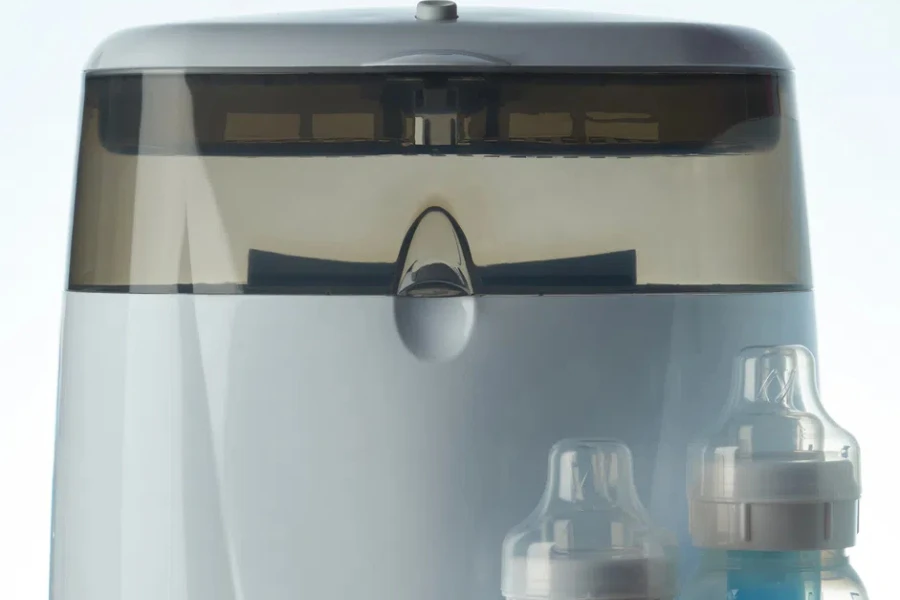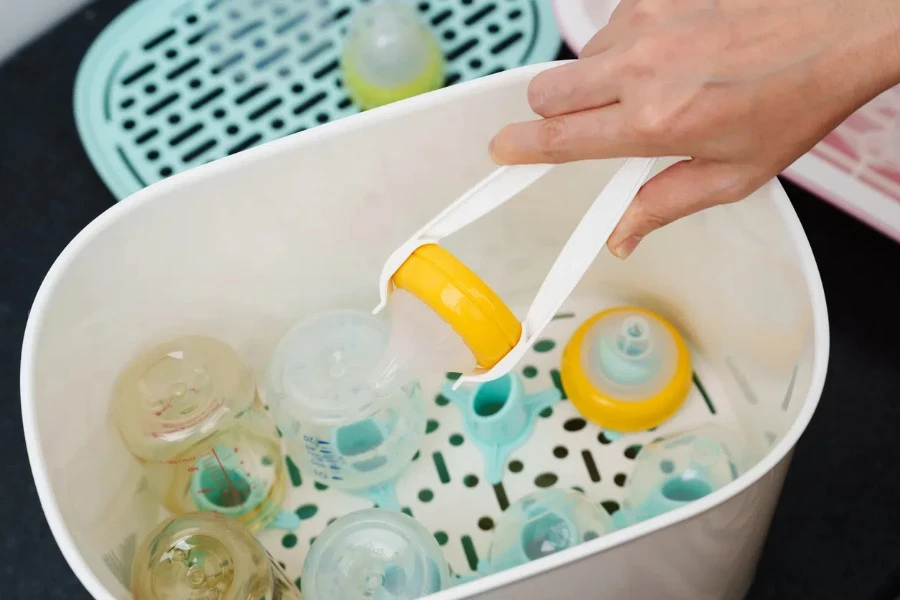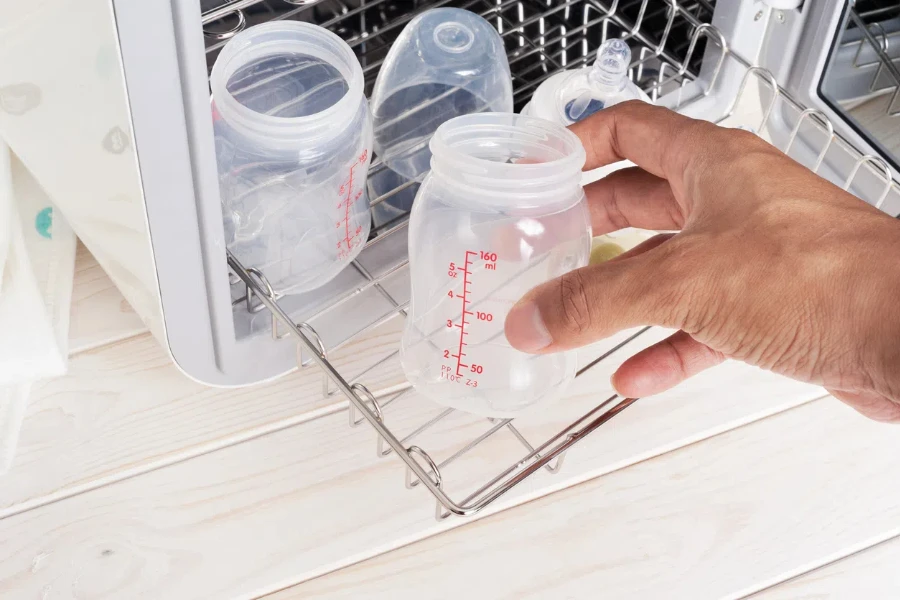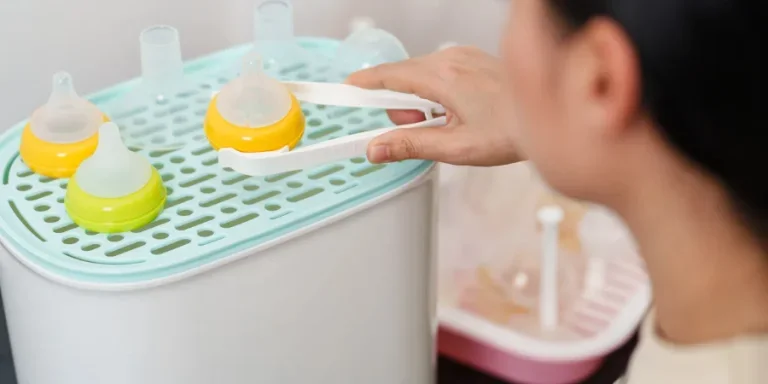Bottle sterilizers are vital pieces of equipment for many companies and householders, helping to make sure that bottles used for drinking are not only clean and sparkling before they are filled with products, but sterile as well. From baby bottles in homes and hospitals, to beverage and other bottles used in factories of all sizes, a closer look at bottle sterilizers and how they work can make a big difference to health – and quality, too. This article will examine the features and workings of bottle sterilizers, how they can be used, how much they cost and which of the various models available can be considered the best.
Table of Contents:
– What is a bottle sterilizer?
– How do bottle sterilizers work?
– How to use a bottle sterilizer
– How much does a bottle sterilizer cost?
– Top bottle sterilizers
What is a bottle sterilizer?

A bottle steriliser is an equipment that uses steam, dry heat, or chemical sterilants to eliminate bacteria, viruses and other harmful pathogens from bottles and other items. These items are placed inside a cavity and sealed with a lid. While it is most common to use in the food and beverage industry, the pharmaceuticals and childcare industries also benefit from the use of these items because they increase safety and assurance of sterility for the consumer.
Bottle sterilizers come in different capacities and built, ranging from compact, portable units to large, industrial-grade units that process thousands of bottles per hour.
Bottle sterilisers are so important. They prevent contamination and spoilage of food and drinks in the food and beverage industry, lengthening their shelf life and their life cycle. In the medical field and childcare, it prevents bottle used to feed the infants or the consumption of medicine for those who are sick or weak from being infected with disease-causing micro-organisms or harmful bugs.
Nowadays, the technologies which are used to steriliase bottles are very advanced. Sophisticated bottle sterilisting began to appear on the market, equipped with digital controls and automatic shut-off. They also have different settings for bottles of different sizes and food materials. The development of this equipment signifies that the process of sterilization has been more efficient, easier to use and safer.
How do bottle sterilizers work?

There are several different ways that bottle sterilisers can sterilise bottles. Steam, dry heat and chemical sterilants are some of the most common. Steam sterilisation is also known as autoclaving sterilisation, in which bottles are placed inside a bottle steriliser and exposed to steam at a very hot temperature and a high pressure. It is very effective at killing microorganisms, is quick and can handle a large number of items at once.
Bottles can be sterilised using dry heat sterilisation. This involves hot air, which is circulated in the chamber, causing sterilisation of theilisation is appropriate for items that might be damaged by moisture, but the process needs to be carried out at higher temperatures and for longer periods of time in comparison to steam sterilisation. An alternative to high-temperature sterilisation is chemical sterilisation. In this approach, bottles can be sterilised in chemicals such as hydrogen peroxide or ethylene oxide. This approach is often favoured for items that cannot withstand high temperatures.
Whatever the actual mechanism, it is clear that a bottle steriliser will rely on some combination of heat, time and the nuances of the organisms it is trying to kill. Of course, for it to be effective, it must also be used correctly by the owner and regularly maintained.
How to use a bottle sterilizer

Cleaning a bottle steriliser can be a multi-step process, and certain steps may differ slightly depending on the type and make of steriliser. But in general, one can start by cleaning the bottles in soapy water to remove residues and debris and, afterwards, place the bottles in the steriliser in such a manner so that they are appropriately spaced to enable the action of the sterilising agent.
You have to add the water to the base for the steam steriliser and shut the lid and switch it on. You are heating the water to boiling point so that steam is produced, which then enters the chamber to sterilise the bottles. It takes a few minutes, for which you have to leave the bottles and then turn the steam off. After that, you have to wait for the bottles to cool and dry before you can take them out.
Dry heat sterilisers must be preheated before the bottles are placed inside the unit. The sterilisation cycle, although longer (possibly up to an hour), will kill the germs safely and there is no lingering steam when the bottles are done sterilising. Chemical sterilisers generally require bottles to be soaked or rinsed in the sterilising liquid for a period of time followed by rinsing with sterile water to remove the chemical residue.
How much does a bottle sterilizer cost?

Pricing for bottle sterilisers can vary greatly depending on size, capacity and features. Home-use models are smaller with fewer features but, on average, can cost $20-$100. They are typically steam sterilisers designed for ease of use and to sterilise a few bottles at a time.
While industrial-grade bottle sterilisers cost several thousand dollars, these machines are designed for use in high-volume sterilisation, and often come complete with programmable cycles, controls for temperature settings and even automated systems for loading and unloading them. Incurring that cost for a high-quality industrial steriliser can significantly improve the efficiency of large-scale operations and reduce risks to safety.
It might be tempting to examine just the sticker price of a bottle sterilizer, but it’s also important to factor in operating and maintenance expenses. Energy costs, replacement parts, and sterilant (if chemical sterilisation is used) can all add up and affect the total cost of ownership.
Top bottle sterilizers

When it comes to choosing a bottle sterilizer, there’s a variety of models on the market to fit different needs and budgets. Here are some of the best options:
- Philips Avent 3-in-1 Electric Steam Steriliser: This small-size, easy-to-use steriliser is suitable for home and can, in 6 minutes, sterilise a max of 6 bottles. With modular design, the steriliser’s loading is flexible and able to adapt to different types of bottles and accessories.
- Wabi Baby Electric Steam Sterilizer and Dryer: Sterilises and dries bottles, so you can sterilise and dry them at the same time, killing bacteria more effectively, and leaving your bottles dry and ready for use. Large capacity, digital controls, automatic shut-off.
- Tommee Tippee Super-Steam Advanced Electric Steriliser: Six Bottles in Five Minutes! Sleek Profile, Easy to Use. Automatic Drying.
For industrial applications, systems such as that built by Steriline and Belimed supply high-capacity, modular sterilisation solutions capable of seamlessly integrating into production lines.
In short: bottle sterilisers are vital to ensure any hygienic and secure circumstances, from our houses to the sterile halls of an industrial building. Knowing how they function, how to use them and what is the real market offer can help any person or company to understand what is the best choice when to decide the purchase of this widely spread and utilised machine. Once that you may have choose your bottle sterilizer, it becomes a quick and easy process to guarantee sterility and prevent disease.




